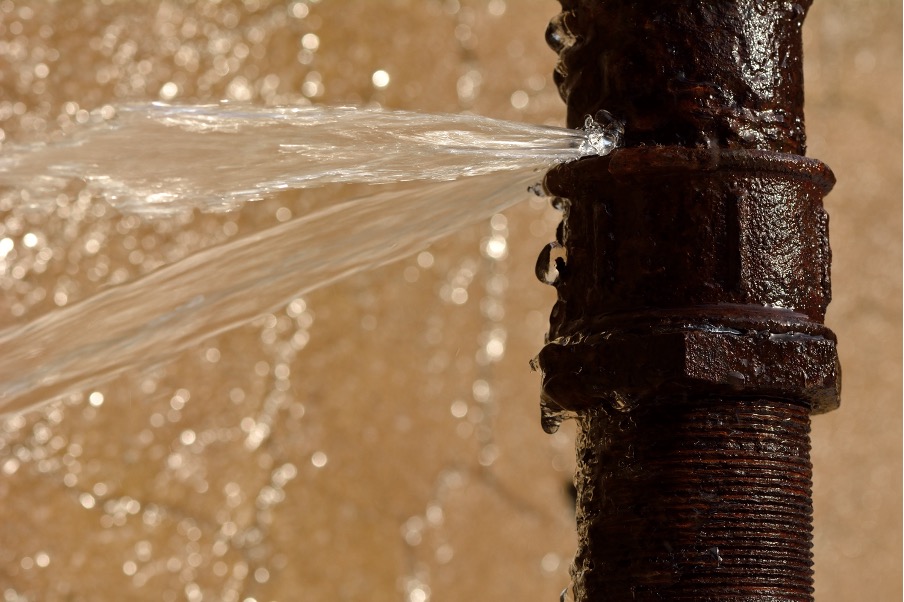We've encountered this article on Finding hidden leaks down the page on the web and thought it made good sense to discuss it with you here.

Early discovery of leaking water lines can minimize a possible calamity. Some small water leaks may not be noticeable.
1. Take A Look At the Water Meter
Every home has a water meter. Checking it is a proven manner in which helps you uncover leaks. For starters, turn off all the water resources. Guarantee no one will certainly flush, utilize the faucet, shower, run the cleaning machine or dish washer. From there, go to the meter and also watch if it will transform. Since nobody is utilizing it, there ought to be no activities. That indicates a fast-moving leak if it relocates. If you spot no modifications, wait a hr or 2 and also check back again. This implies you may have a sluggish leakage that might also be below ground.
2. Inspect Water Usage
If you identify sudden modifications, regardless of your usage being the very same, it means that you have leakages in your plumbing system. An abrupt spike in your bill suggests a fast-moving leakage.
A steady increase every month, even with the same behaviors, reveals you have a slow-moving leakage that's additionally gradually rising. Call a plumber to extensively examine your home, particularly if you feel a warm area on your flooring with piping below.
3. Do a Food Coloring Examination
When it comes to water usage, 30% comes from bathrooms. If the color somehow infiltrates your bowl throughout that time without flushing, there's a leakage between the storage tank and also bowl.
4. Asses Exterior Lines
Do not neglect to check your outside water lines as well. Examination faucets by attaching a garden tube. Ought to water seep out of the connection, you have a loose rubber gasket. Replace this as well as make sure all links are limited. It will help get it properly examined and preserved each year if you've obtained a lawn sprinkler system. One small leakage can waste lots of water as well as spike your water costs.
5. Inspect as well as Analyze the Scenario
House owners ought to make it a habit to inspect under the sink counters and also inside cabinets for any type of bad odor or mold development. These 2 red flags show a leak so timely attention is needed. Doing regular assessments, also bi-annually, can save you from a significant trouble.
Examine for discolorations and also compromising as the majority of devices as well as pipes have a life span. If you think leaking water lines in your plumbing system, do not wait for it to rise.
Early discovery of dripping water lines can mitigate a potential catastrophe. Some tiny water leaks might not be visible. Inspecting it is a proven means that helps you find leaks. One small leakage can throw away loads of water as well as surge your water costs.
If you suspect dripping water lines in your plumbing system, do not wait for it to intensify.
WARNING SIGNS OF WATER LEAKAGE BEHIND THE WALL
PERSISTENT MUSTY ODORS
As water slowly drips from a leaky pipe inside the wall, flooring and sheetrock stay damp and develop an odor similar to wet cardboard. It generates a musty smell that can help you find hidden leaks.
MOLD IN UNUSUAL AREAS
Mold usually grows in wet areas like kitchens, baths and laundry rooms. If you spot the stuff on walls or baseboards in other rooms of the house, it’s a good indicator of undetected water leaks.
STAINS THAT GROW
When mold thrives around a leaky pipe, it sometimes takes hold on the inside surface of the affected wall. A growing stain on otherwise clean sheetrock is often your sign of a hidden plumbing problem.
PEELING OR BUBBLING WALLPAPER / PAINT
This clue is easy to miss in rooms that don’t get much use. When you see wallpaper separating along seams or paint bubbling or flaking off the wall, blame sheetrock that stays wet because of an undetected leak.
BUCKLED CEILINGS AND STAINED FLOORS
If ceilings or floors in bathrooms, kitchens or laundry areas develop structural problems, don’t rule out constant damp inside the walls. Wet sheetrock can affect adjacent framing, flooring and ceilings.
https://www.servicemasterbyzaba.com/blog/how-to-detect-water-leakage-in-walls/

As an avid person who reads on Top leak detection hacks, I imagined sharing that information was beneficial. Are you aware of anybody else who is intrigued by the subject? Why not share it. Thanks for going through it.